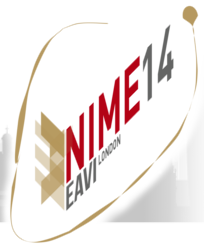Interactive Music Notation and Representation Workshop
- On 3 mai 2014
 June 30 2014 – Goldsmiths, University of London, London, UK
June 30 2014 – Goldsmiths, University of London, London, UK
www.nime2014.org
Call for participation
- Submission Deadline: May 16, 2014 (No extensions possible!)
- Notification: May 30, 2014
- Workshop date: June 30, 2014
Computer music tools for music notation have long been restricted to conventional approaches and dominated by a few systems, mainly oriented towards music engraving. During the last decade and driven by artistic and technological evolutions, new tools and new forms of music representation have emerged. The recent advent of systems like Bach, MaxScore or INScore (to cite just a few), clearly indicates that computer music notation tools have become mature enough to diverge from traditional approaches and to explore new domains and usages such as interactive and live notation.
You are invited to participate to this session about music notation, which will consist of both informal discussions and short presentations / demonstrations. If you would like to propose a presentation or a demonstration, send a one page abstract before May 16 to dfober@gmail.com. A 20 minutes time slot will be allocated to each accepted proposal. Look at http://tiny.cc/u27hex for a proposal template.
The aim of the workshop is to gather artists, researchers and application developers, to compare the views and the needs inspired by contemporary practices, with a specific focus on interactive and live music, including representational forms emerging from live coding. Special consideration will be given to new instrumental forms emerging from the NIME community.
The workshop will be held in two parts:
- Overview of the notation history, tools, uses and problematics: Building a map of the different approaches, in interaction with invited participants and with the audience will be the main focus of this part. Online tools for mind mapping will be made available to allow remote participation.
- Practices and applications: This second part is intended to take advantage of the NIME context to involve, discover and question the notation issues related to new instruments, including also live coding perspectives. For this part, we are interested in artistic experiences as well as in technical approaches. Demonstrations will be welcome, whether based on tools or new instruments, including electronics.
You are invited to participate to this session about music notation, which will consist of both informal discussions and short presentations / demonstrations. If you would like to propose a presentation or a demonstration, send a one page abstract before May 16 to dfober@gmail.com. A 20 minute time slot will be allocated to each accepted proposal. Look at http://tiny.cc/u27hex for a proposal template.
Organisers
- Dominique Fober – Grame – Lyon
- Jean Bresson – Ircam – Paris
- Pierre Couprie – IReMus, Université Paris-Sorbonne – Paris
- Yann Geslin – INA/GRM – Paris
- Richard Hoadley – Anglia Ruskin University – Cambridge
Contact
Please send enquiries to dfober@gmail.com

0 Commentaires